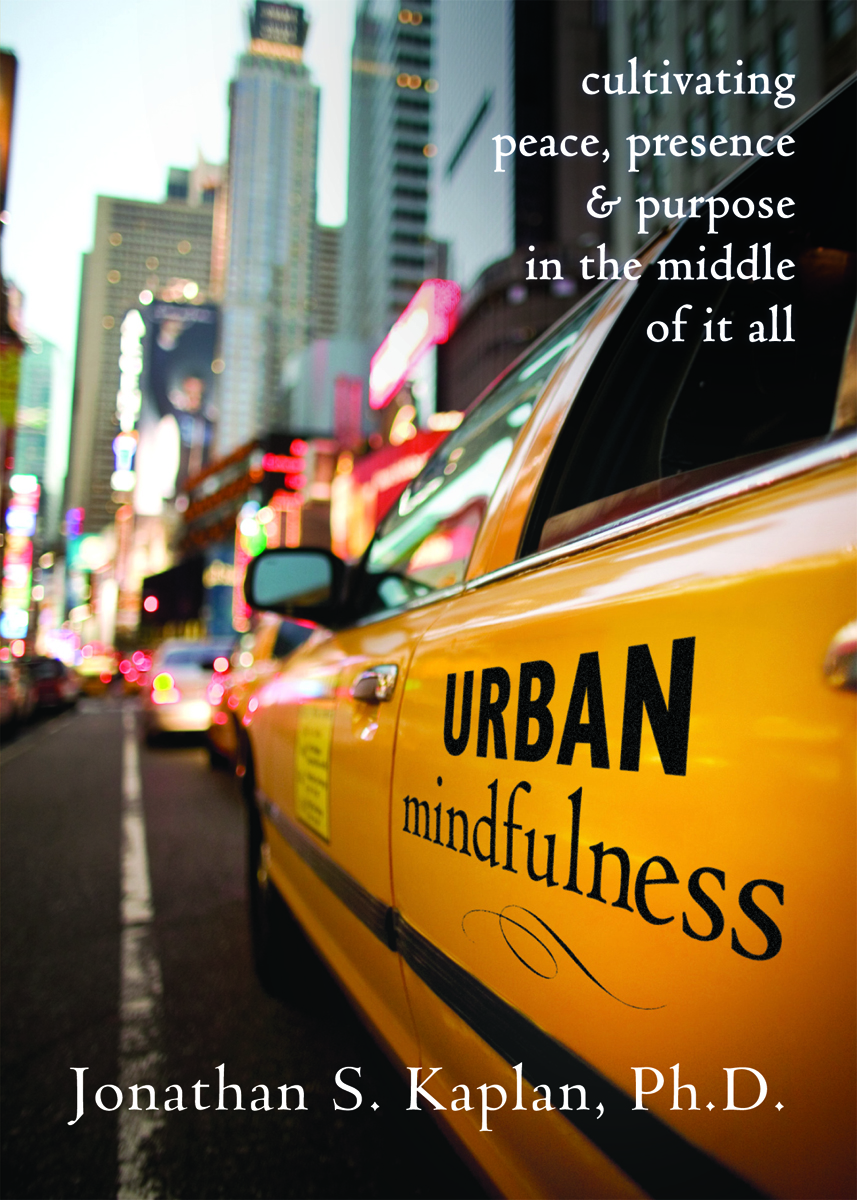Mindfulness: The Basics
 Monday, September 19, 2011 at 02:29PM
Monday, September 19, 2011 at 02:29PM  By Jonathan S. Kaplan, Ph.D.
By Jonathan S. Kaplan, Ph.D.
Mindfulness: The Basics
I’ve been giving a lot of talks on mindfulness lately, and I thought that I would share some of what I’ve been presenting (please pardon the pun!). Many people have expressed appreciation for this simple breakdown of mindfulness, and I hope that you find it useful, too. So, here are the basics of mindfulness: what, who, when, where, how, and why.
The What
Mindfulness is a special kind of attention characterized by attitudes of openness, curiosity, and acceptance. We notice our thoughts, feelings, physical sensations, and sense perceptions as we're having them in the present moment. Recently, I learned of another definition that I liked: mindfulness is paying extra-ordinary attention to ordinary experiences.
The Who
Who can practice mindfulness? Anyone, even you! You don’t have to be a guru on a hilltop or a Zen monk in order to become more aware to your experiences.
The When
We can practice mindfulness anytime. Admittedly, some times are better--or easier--than others. It is hard to be aware of our thoughts and feelings, for example, if we’re caught in a very emotional moment. It helps to have a modicum of alertness, but the main ingredient is simply the intention to be mindful. There is no perfect time to practice. We simply need to use whatever time we have and get right into it!
The Where
Relatedly, there is no perfect place to practice mindfulness, but some places are easier than others. Quiet, tranquil places are a bit easier due to the lack of distractions, but we can be mindful anywhere (even on the subway).
The How
There are two dimensions to consider when practicing mindfulness: (a) the kind of attention being employed and (b) the degree of formality associated with it.
Kind of Attention
We can focus our awareness like a laser beam and become very immersed in noticing a small detail or perception. Alternatively, our attention can be diffuse, allowing us to become aware of--but not focused on--whatever arises.
We experience this attentional difference easily through visual perception. We can really stare at something and describe its properties (in my recent book, I describe becoming mindfully aware of an object at work, like a stapler) or we can gaze at a point in space and allow ourselves to notice objects in our peripheral vision. This is the difference between concentrated and diffuse awareness, and reflects the two ways in which we can practice mindfulness.
Formality
Mindfulness can also be done formally (through meditation) or informally (through activities of daily living). There are many different kinds of meditation, and I do recommend that people try it. Sharon Salzberg’s book Real Happiness is a nice, structured introduction to meditation, and I’ve used it as a textbook in my class for undergraduates. If you find it difficult to sit still (or if your mind is particularly active), walking meditation can be a helpful place to start.
Informally, we can become aware anytime of whatever we think, do, feel, or sense. We can notice our thoughts (e.g., what is going through our minds when stuck in traffic), become aware of our actions (e.g., how it feels in our body to walk), feel the physical embodiment of emotions (e.g., what happens to your breathing when you’re angry), or pay attention to our senses (e.g., see any visual signs of the changing seasons). Often, people make the mistake of glorifying meditation and dismissing informal practice. This is unfortunate. Ideally, we apply mindfulness in both ways. An exercise analogy is appropriate here: Working out helps us get stronger, faster, and leaner more quickly, but it doesn’t help if we’re also overeating and being a couch potato. Walking more, taking the stairs (vs. elevator) and other informal forms of exercise will help us get in shape over time, but it takes more time and consistency. Within Buddhism, some teachers have noted that meditation can develop insights strongly and quickly, while informal practice slowly cultivates a solid, experiential wisdom.
The Why
Why practice mindfulness? This is a very important question, actually. Why do this at all? Mindfulness helps us pay more attention to our experiences, which is great when they’re pleasant, but not so much fun when they’re painful. Each person needs to articulate an answer for him/herself. Here are some of the general ones that I discuss in my presentation:
- Research has shown that mindfulness increases attention, lowers stress, improves physical health and immune functioning, and provides relief from certain kinds of psychological difficulties.
- It allows us to pause before reacting in ways that might be unhelpful or hurtful, or interrupt times when we’re already stuck in a negative spiral.
- It invites us to experience our lives more purposefully and more fully.
- It makes it possible to realize that our actions are not limited by our thoughts or feelings.
- It allows us to be more present for the joyful and happy moments of life.
- Often, it feels better than distracting ourselves or being “stuck in our heads.”
Conclusion
I hope that this basic introduction to mindfulness has been interesting and--dare I say--enlightening. If you have other thoughts, questions, or reactions, please feel free to share them.



Reader Comments (4)
Every morning I start out with the hopes of being mindful all day, but by the time I get in my car, I usually forget. Your post reminds me how important it is and I'll start again tomorrow but more focused on achieving a mindful day. Thank you for your post!
YES! Great post. Its as easy as that, isn't it!
Thanks for your encouragement, Elle. Best wishes on your own happiness project! Jonathan
Enlightening indeed. Thank you very much for this post, will be sure to share it!
No one wants to escape into their own heads...
Have a great day and thanks again.